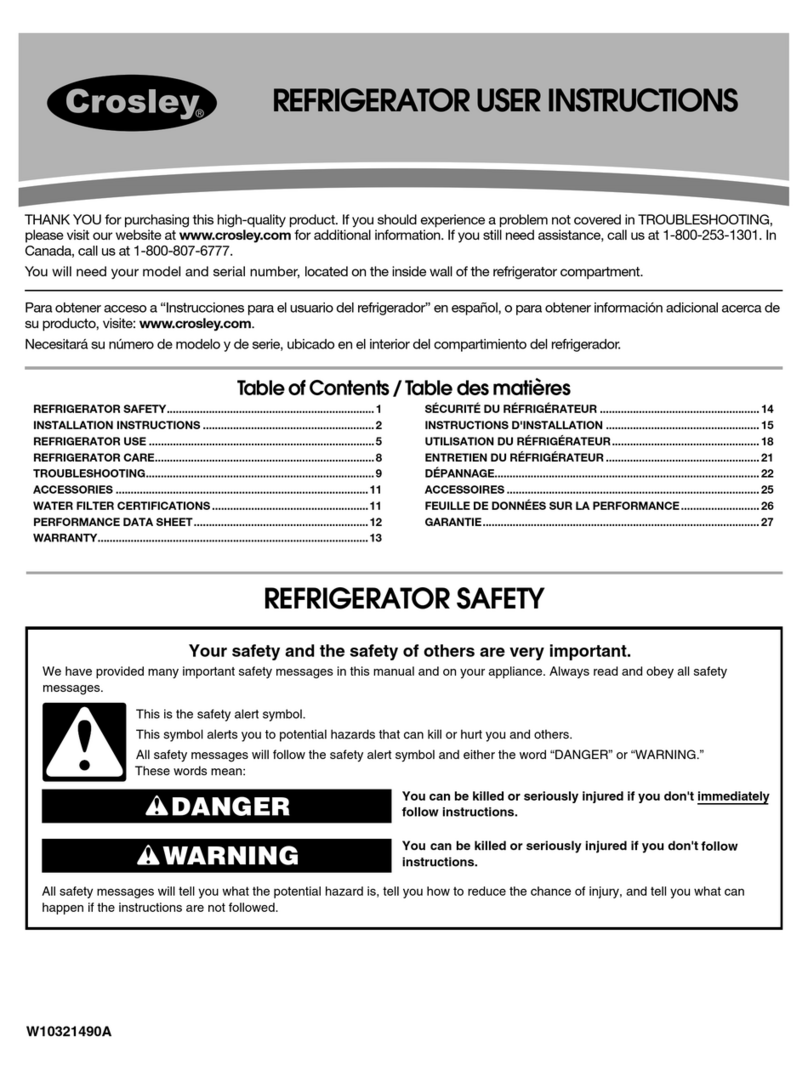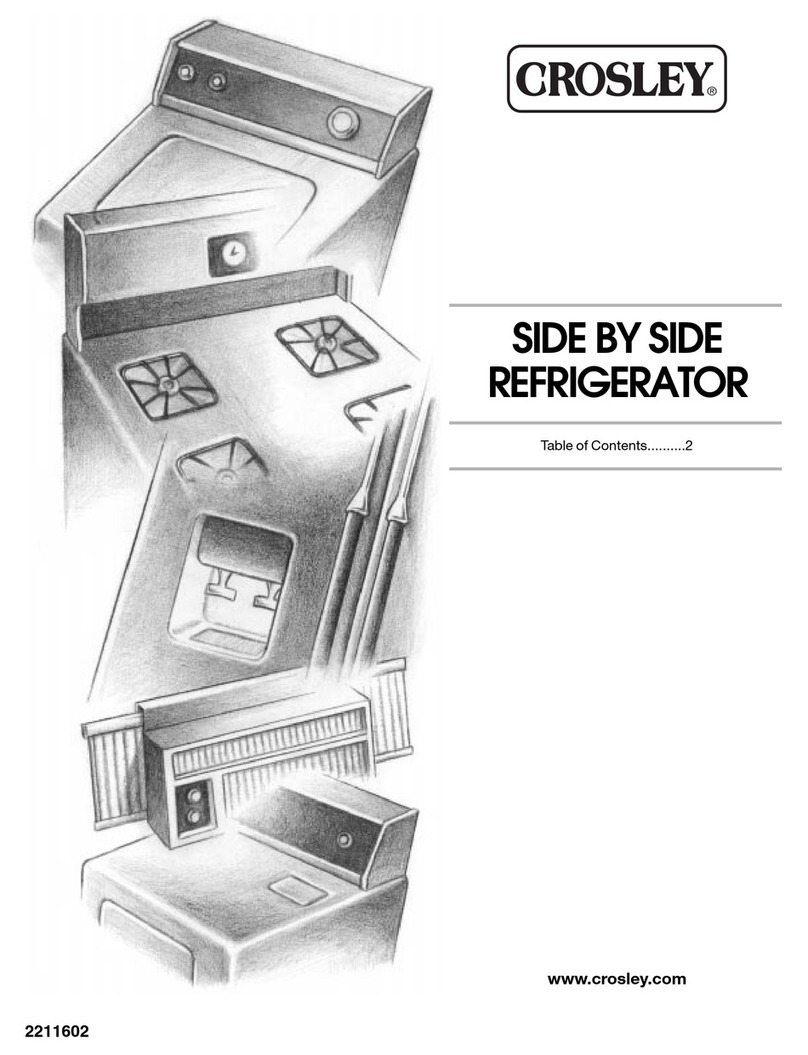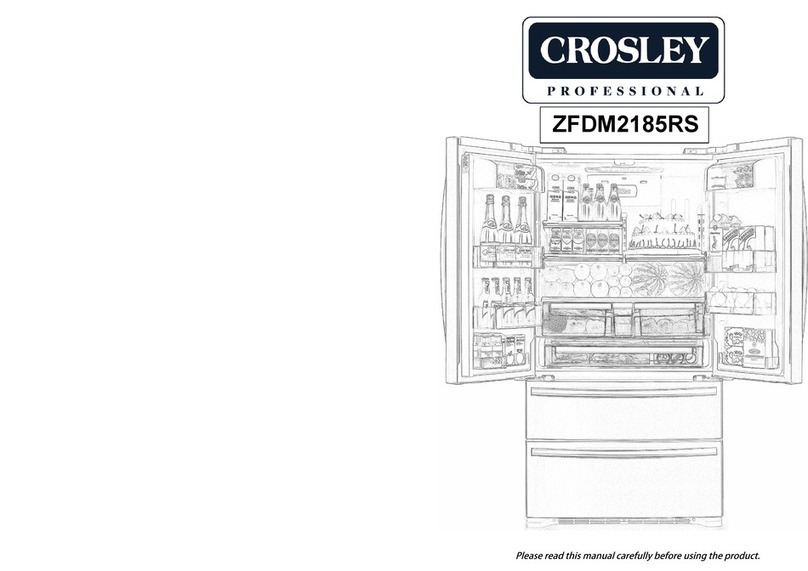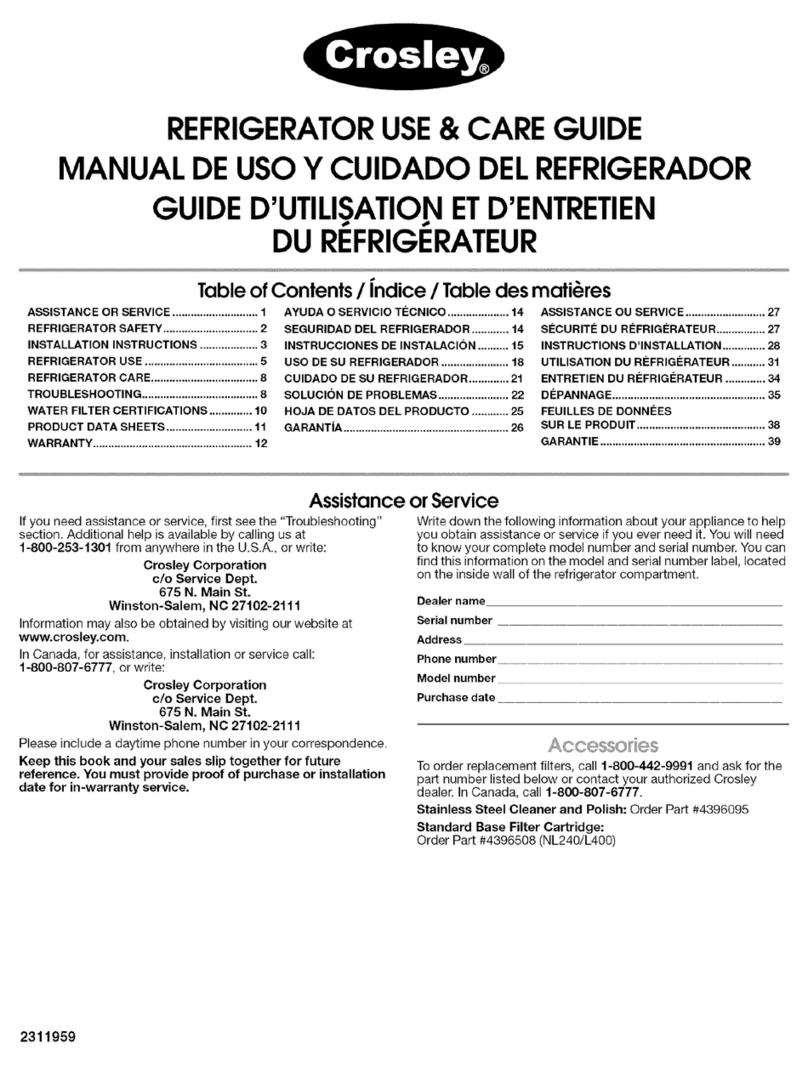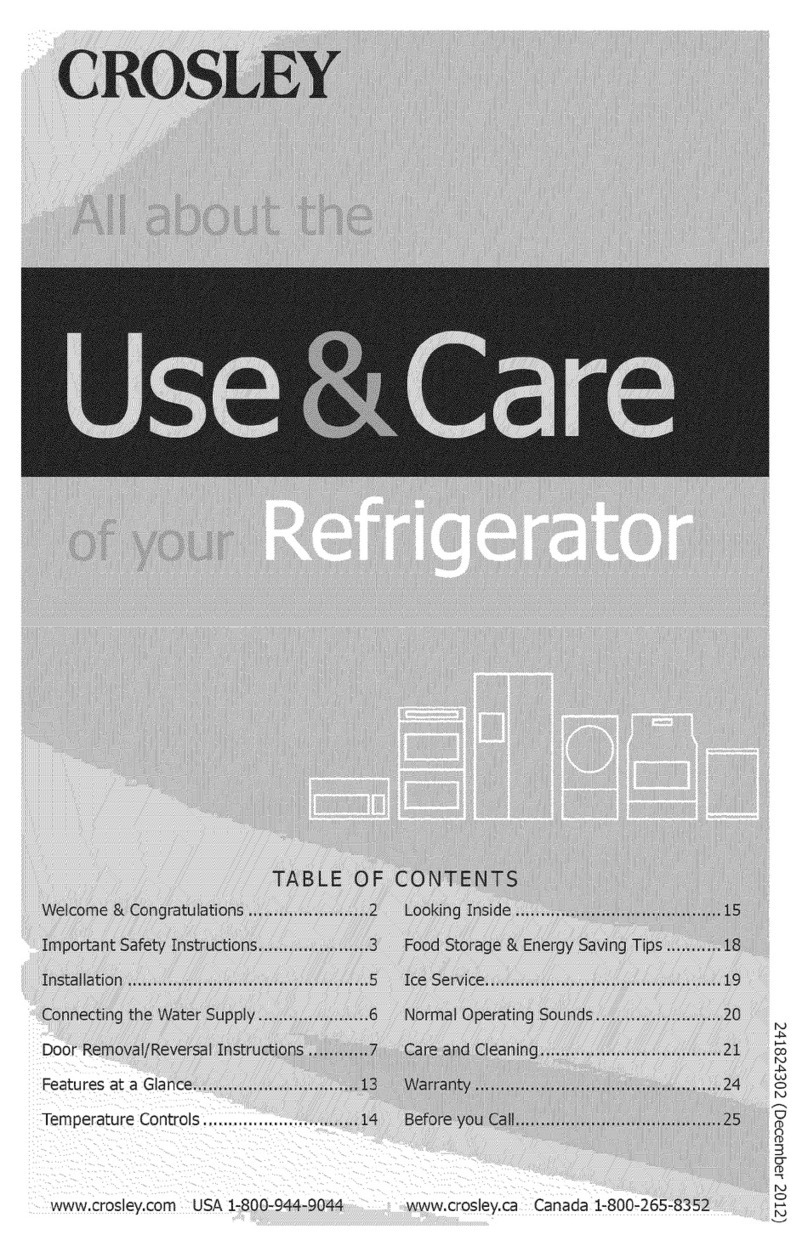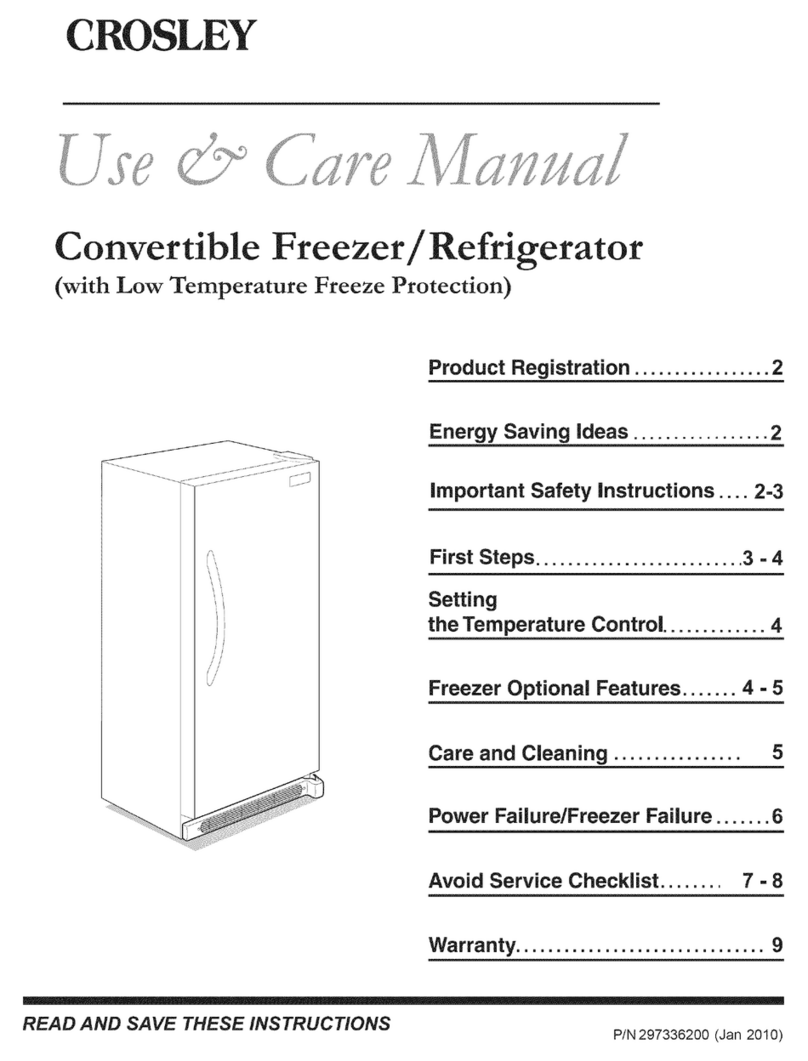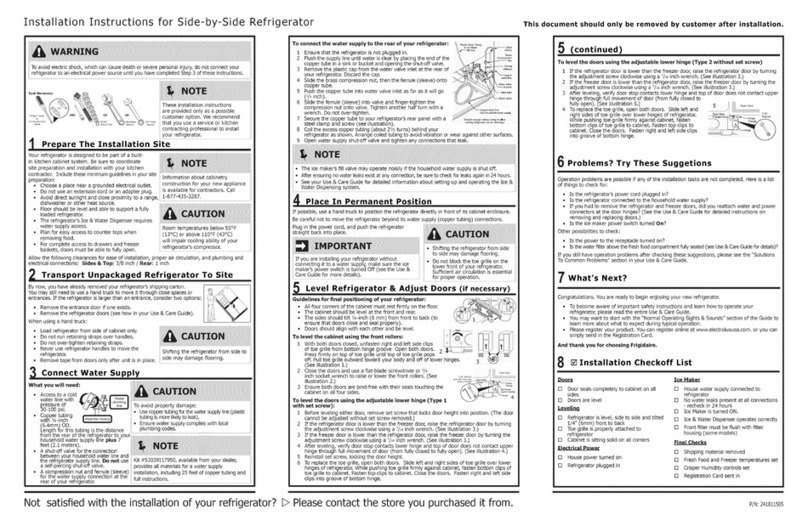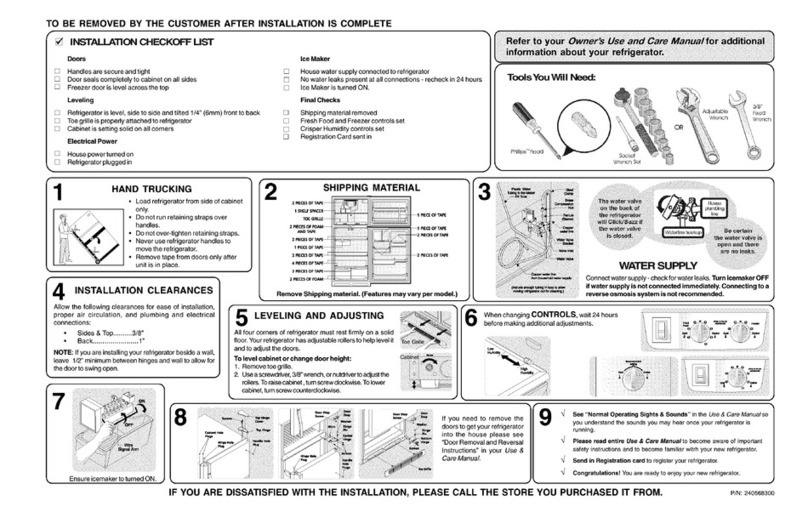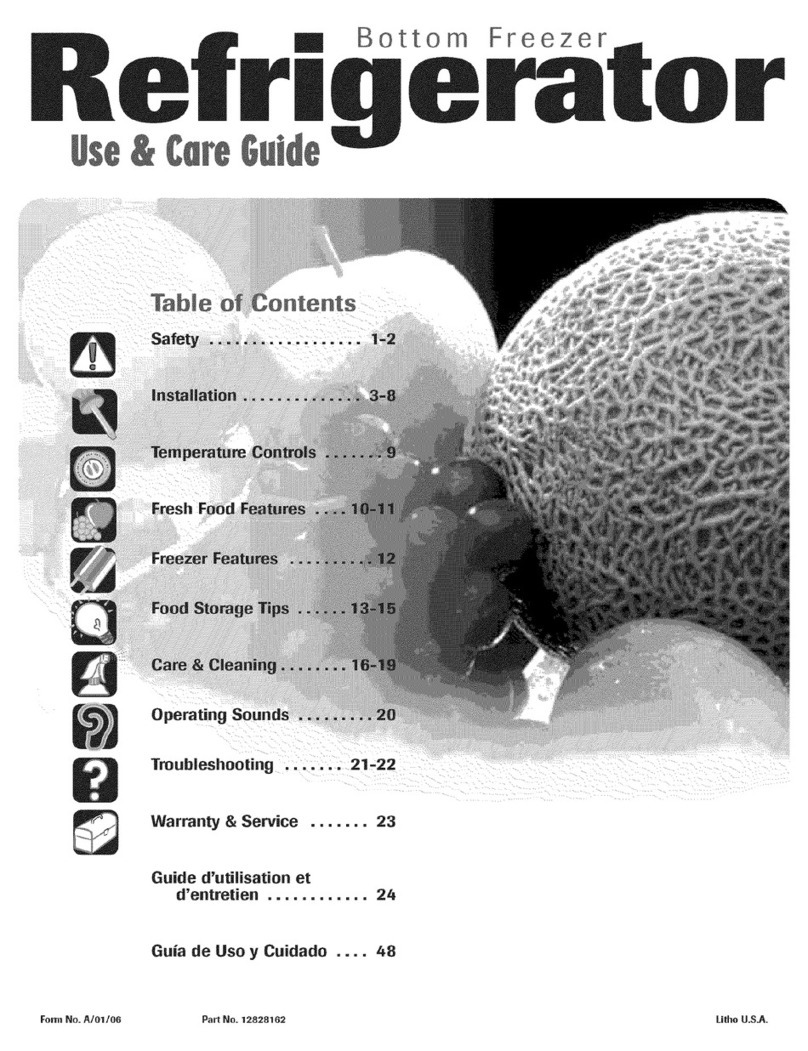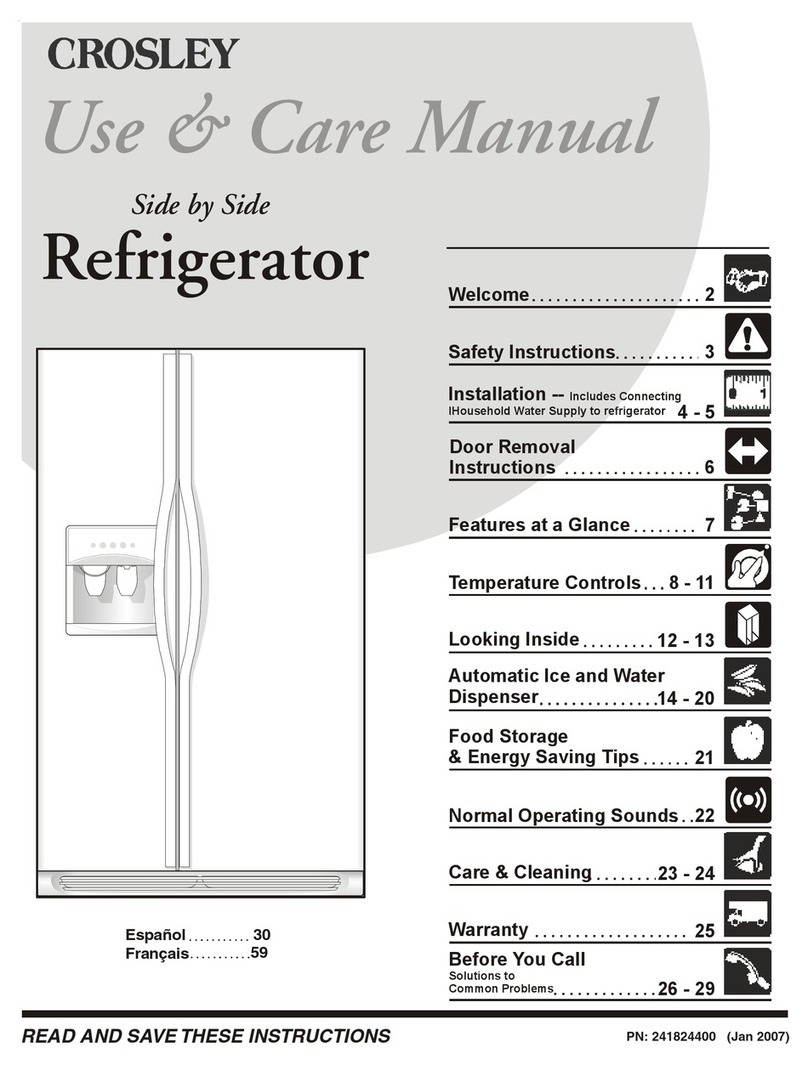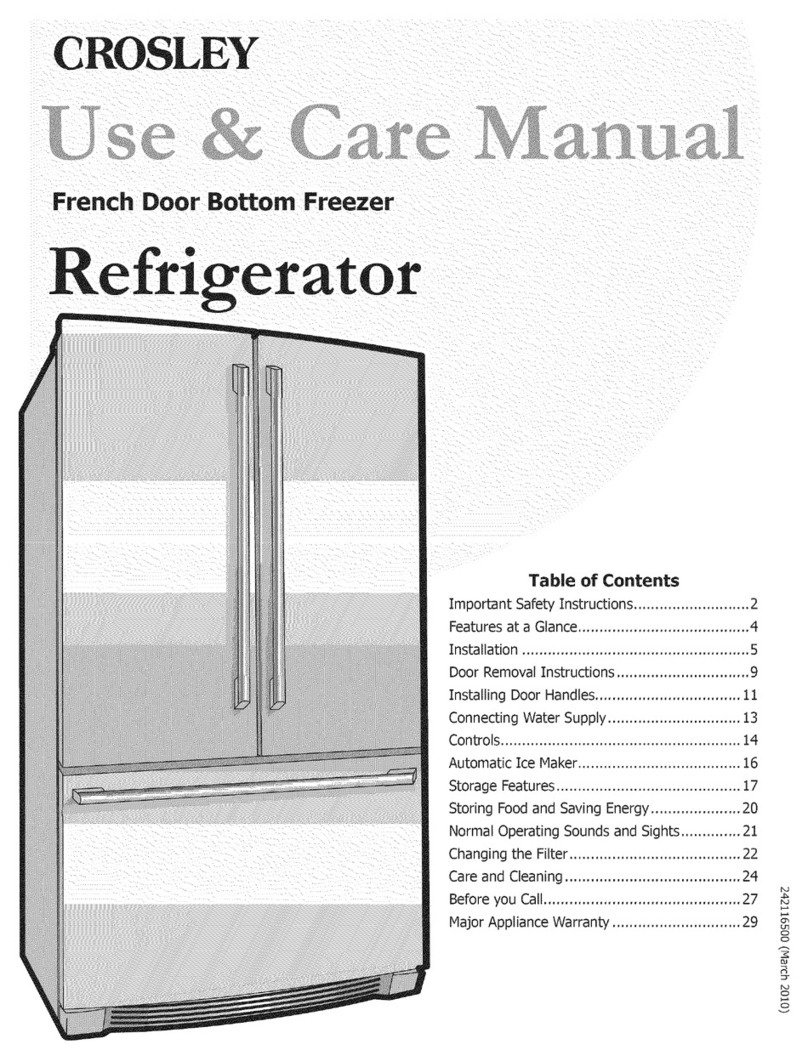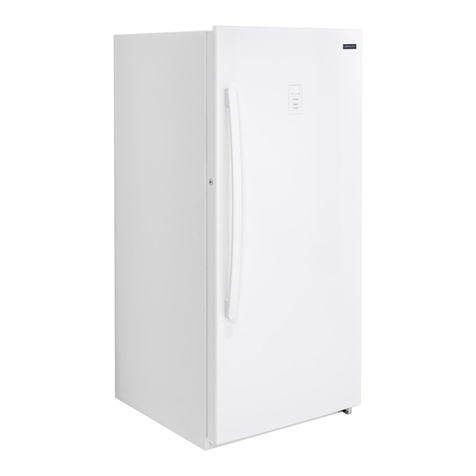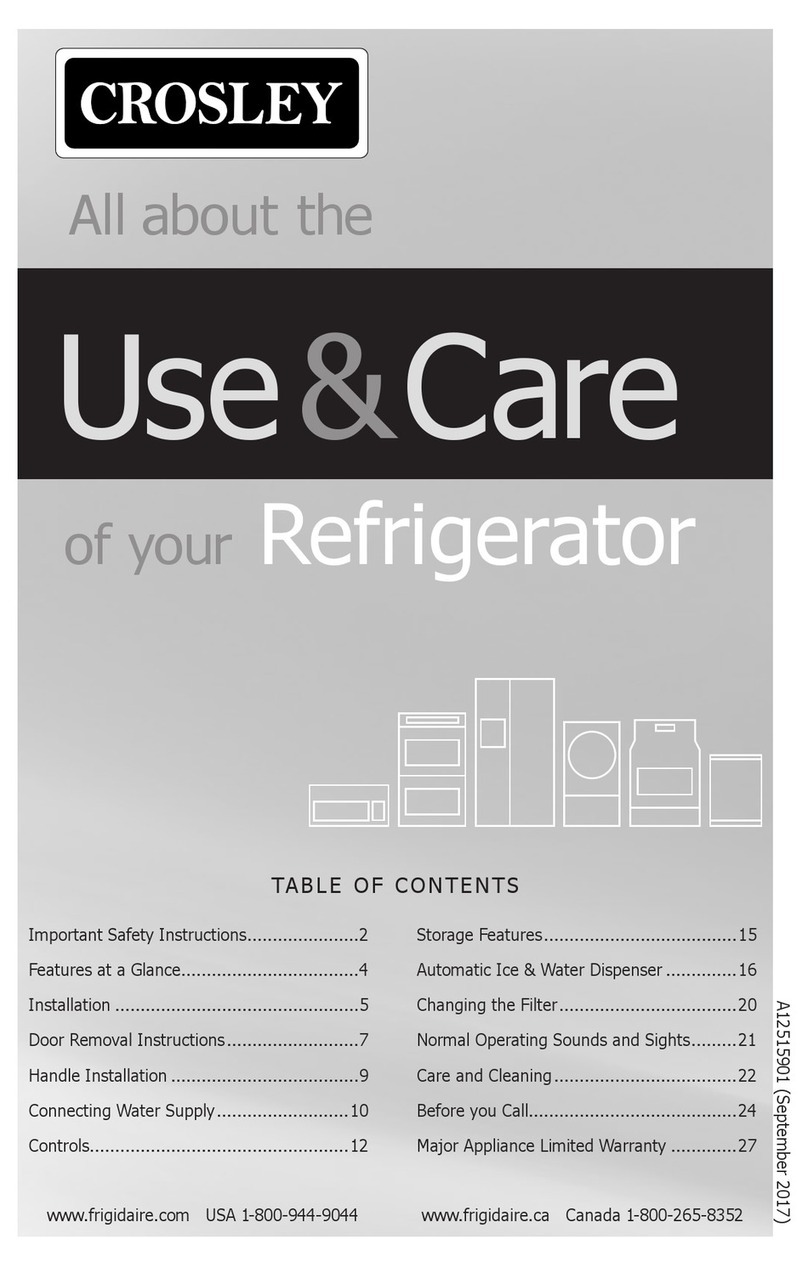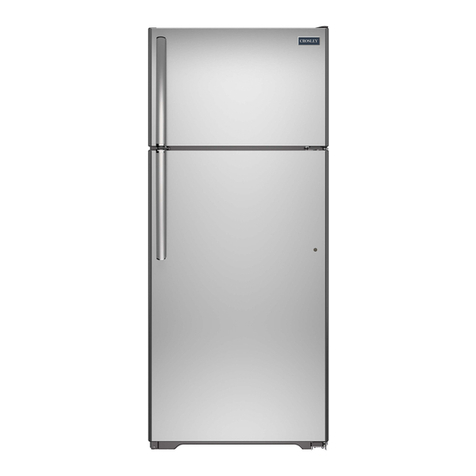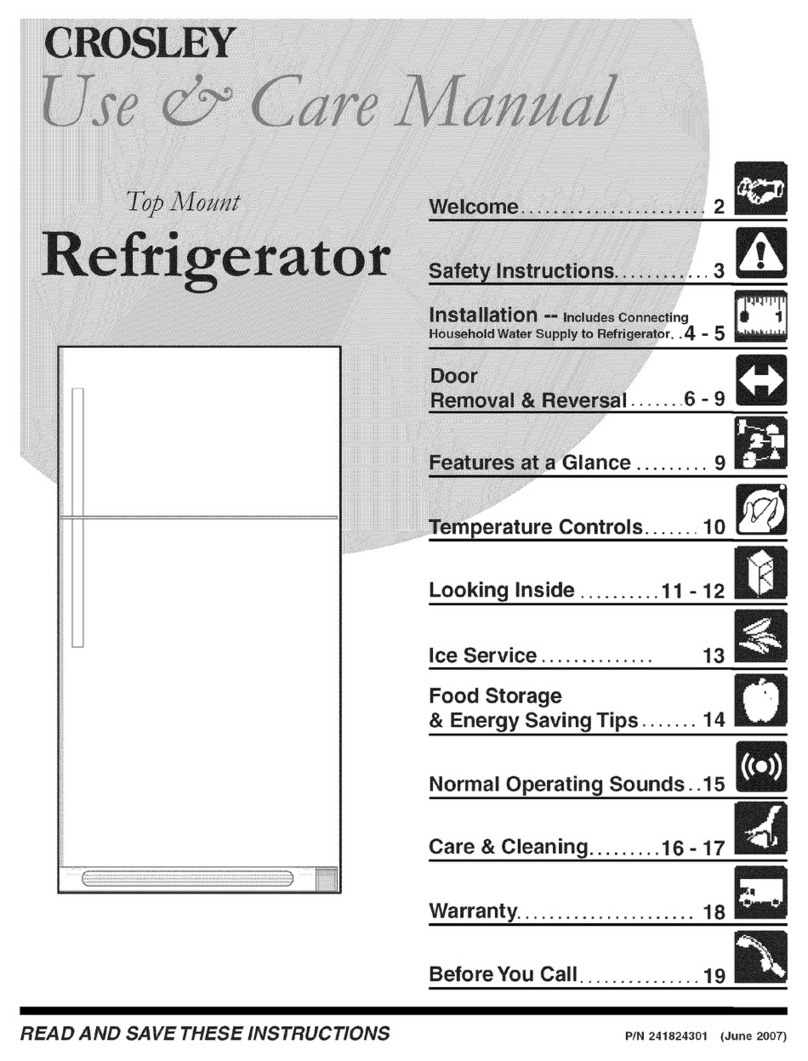
Do not store beer, beverage or other fluid contained in bottles or
enclosed containers in the freezing chamber of the refrigerator; or
otherwise the bottles or enclosed containers may crack due to
freezing to cause damages.
1.6 能耗警示
1.7 废弃时相关事项
见英文部分
请不要将瓶装或密闭容器内的流体物品如瓶装啤酒、饮料等
放入冷冻室,以免冻结爆裂导致其他损失。
本冰箱废弃不用时,请将本冰箱门卸掉,并拆下门封条及搁物架,将门与搁物架放到
合适的位置,以免儿童进入玩耍,发生意外。
该冰箱使用的制冷剂和环戊烷发泡材料均为可燃性材料,废旧冰箱应与火源
隔绝,不能燃烧处理。请交给具有资质的专业回收公司处理。以避免对环境造成危
害或引发其它危险。
正确处理该产品:
这种标志表示在整个欧盟中,这种产品不宜与其他家庭垃圾一起处理。为避免因为不受
控制的垃圾处理而对环境或人身健康造成潜在伤害,回收垃圾以促进材料资料的可持续重
复利用。要想回收用过的设备,请使用回收或收集系统或联系产品零售商。他们可以确保
该产品回收环保安全。
1)Refrigerating appliances might not operate consistently (possibility of defrosting of contents or
temperature becoming too warm in the frozen food compartment) when sited for an extended
period of time below the cold end of the range of temperatures for which the refrigerating appliance
is designed.
2)The fact that effervescent drinks should not be stored in food freezer compartments or cabinets or
in low-temperature compartments or cabinets, and that some products such as water ices should not
be consumed too cold;
3)The need to not exceed the storage time(s) recommended by the food manufacturers for any kind
of food and particularly for commercially quick-frozen food in food-freezer and frozen-food storage
compartments or cabinets;
4)The precautions necessary to prevent an undue rise in the temperature of the frozen food while
defrosting the refrigerating appliance, such as wrapping the frozen food in several layers of
newspaper.
5)The fact that a rise in temperature of the frozen food during manual defrosting, maintenance or
cleaning could shorten the storage life.
1.6 Warningsfor energy
Warningsfor energy
1.7 Warnings for disposal
Refrigerant and cyclopentane foaming material used for the refrigerator are flammable.
Therefore, when the refrigerator is scrapped, it shall be kept away from any fire source and be
recovered by a special recovering company with corresponding qualification other than be
disposed by combustion, so as to prevent damage to the environment or any other harm.
When the refrigerator is scrapped, disassemble the doors, and remove gasket of door and
shelves; put the doors and shelves in a proper place, so as to prevent trapping of any child.
Correct Disposal of this product:
This marking indicates that this product should not be disposed with other household
wastes throughout the EU. To prevent possible harm to the environment or human
health from uncontrolled waste disposal, recycle it responsibly to promote the
sustainable reuse of material resources. To return your used device, please use the
return and collection systems or contact the retailer where the product was purchased.
They can take this product for environmental safe recycling.
第55
页

